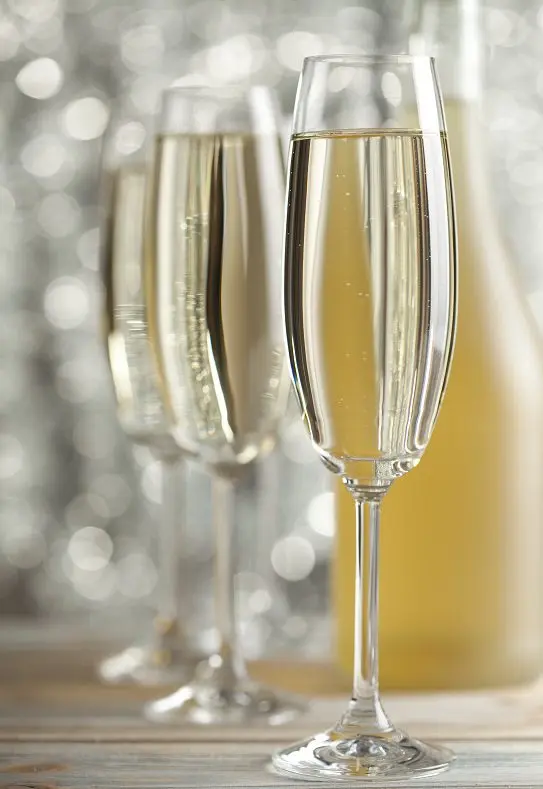There is a classification according to which types and varieties of champagne are distinguished depending on the grape variety, sugar content, crop year and the characteristics of the drink production.
Types of champagne
According to the number of grape varieties used in the production, all brands of champagne can be divided into vintage and non-vintage types.
Vintage (millesim) champagne is made only from grapes harvested in one year (millesim), provided that this year was successful for winemaking (it happens 2-3 times in 10 years). Each wine region (Champagne is no exception) publishes its own list of successful years for growing grapes. But in the past few years, many producers have stopped adhering to this rule, which has devalued vintage champagnes.
Non-vintage champagne is made by blending the three grape varieties allowed for champagne (pinot noir, chardonnay and pinot meunier). Such drinks usually contain 15-40% wine of the last 2-3 years (medium and low quality reserve wine is used).
Sugar content
- Non-dosage (brut nature) – produced without the addition of sugar, as it is believed that it levels the taste of champagne. These are the most expensive varieties and require the best wine materials to produce them. Residual sugar in the drink appears due to fermentation, but its content does not exceed 6 grams / liter.
- Brut (brut) – this is the most common type of champagne with a sugar content of not more than 15 g / l (1,5%). Great for any meal.
- Extra sec (Extra-dry) – intermediate grade of champagne, sugar content – 12-20 g / l. Currently, it is almost not produced due to low popularity among consumers.
- Sec (Dry) – dry (semi-sweet) champagne, contains 17-35 grams of sugar per liter.
- Demi-sec (Rich) – sweet champagnes with a sugar content of 33-50 g / l.
- Doux – dessert varieties, the amount of sugar in which exceeds 50 g / l.
By type of manufacturer
- NM (Negociant manipulant) – for the production of champagne, the company buys grapes or wine materials. Almost all major manufacturers fall into this group.
- RM (Recoltant-manipulant) – the wine house owns the vineyards and controls the entire cycle of champagne production up to bottling.
- ND (Negociant distributeur) – the company sells champagne under its own brand, but does not produce it.
- MA (Marque auxiliaire) – the brand does not belong to either the owner of the vineyard or the producer. Restaurants and supermarkets often own their own brands.
- SR (Societe de recoltants) – champagne produced by an association of winegrowers that control several brands.
- RC (Recoltant cooperateur) is a member of a cooperative that sells champagne wines under its own brand.
Champagne varieties
- Cuvees de prestige (special or delux) are the most prestigious drinks made from Grand Cru grapes. Most champagnes of this variety are vintage and aged longer than others.
- Blanc de blancs (white of whites) – made exclusively from white Chardonnay grapes.
- Blank de noirs (white from black) – made only from red Pinot Meunier and Pinot Noir varieties.
- Rose (pink) – champagne obtained by mixing red and white wine. The characteristic pink color of the drink is obtained by soaking the skins of red grapes in the initial must.

Classification of champagne bottles depending on their capacity:
- Magnum (Magnum) – a bottle of 1,5 liters;
- Jeroboam (Jeroboam) – 3 liters (2 magnums);
- Rehoboam (Reoboam) – 4,5 l (3 magnums);
- Mathusalem (Matusalem) – 6 liters (4 magnums);
- Salmanazar (Salmanazar) – 9 liters (6 magnums);
- Balthazar (Balthazar) – 12 l (8 magnums);
- Nabuchodonosor (Nabyukodonozor) – 15 liters (10 magnums) these champagne bottles are not currently used.









